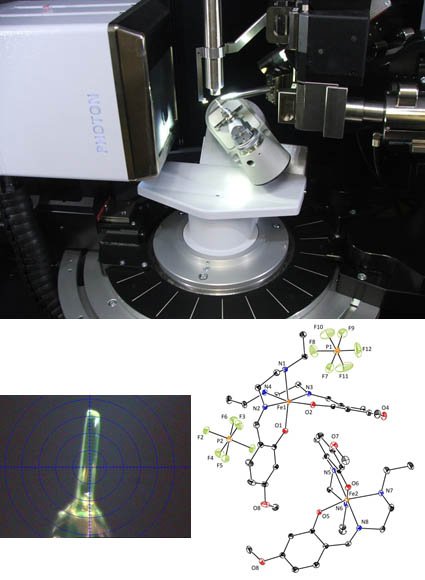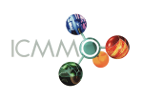X-ray diffraction on single crystal

X-ray diffraction (XRD) on single crystal is the reference technique in structural crystallography. Knowledge of the molecular and crystalline structure is crucial for all that concerns the problems of stereochemistry (chirality, stereoisomerism, ...), and in general the structure-activity relationships, and this essential information is often impossible to be obtained with other methods.
Chemical reactivity, catalysis, coordination chemistry and supramolecular chemistry, physico-chemistry of the solid, the development of new materials or natural substances for pharmacy are some of the areas where X-ray diffraction is the analytical reference method.
What you get
It provides crystallographic and structural information on the compounds (positions of the atoms in 3D; figures; interatomic distances and angles; intra and intermolecular bonds; modes of molecular association.). In further studies: the determination of the absolute configuration of molecules, the charges of atoms and the calculation of electrostatic potentials.
How it works
This technique is based on recording the intensities diffracted by a single crystal subjected to X-radiation and the information obtained makes it possible to determine the three-dimensional structure of the molecules at atomic resolution
How to use them
The diffractometers are not self-service.
Service activities:
The service engineer takes care of all the necessary steps to determine the crystal structures:
-
Selection and mounting of crystals (often sensitive to air)
-
Determination of crystal lattice and Bravais network
-
Optimized recording of diffracted intensities, data processing
-
Realization of the facies of the crystal with indexing of the faces
-
Search for systematic extinctions and space group
-
Resolution and refinement of structures
-
Determination of the absolute configuration
-
Graphic representation of molecules and writing of the crystallographic part of the publications
-
Submission of CIF files to the structural data bank (CCDC)
Equipment other than diffractometer:
-
2 stereo STEMI 2000 microscopes with polarized light, one placed under a fume cupboard with air recirculation, equipped with a camera allowing the taking of photos and / or videos of crystals and the live visualization on PC screen
-
2 workstations with resolution and structural refinement programs
-
Access to the Cambridge Structural Database CSD (Cambridge Structural Database).
Note
Studies on powders, thin layers, etc. are not carried out by this RX Service, which does not have the appropriate equipment. Please contact the powder or surface service of the institute.
Options:
Low temperature (28 K - 500 K). At low temperatures, very precise measurements on medium-sized compounds can give information on the characteristics of electron density and therefore on chemical bonds and their relationships with physical properties.

